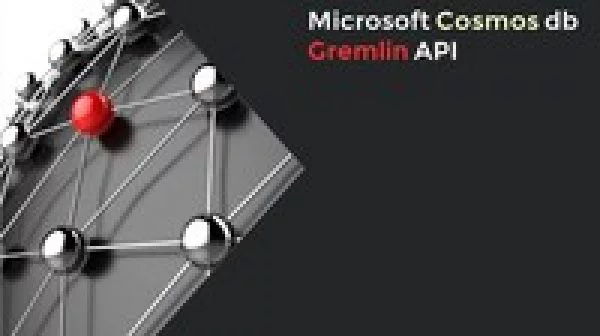
Learn Cosmos db Gremlin API by building a .Net Core REST API
$94.99 $12.99Track price
Add your review
Add to wishlistAdded to wishlistRemoved from wishlist 0
Add to compare8.0/10
(Our Score)
Product is rated as #85 in category APIs
Let’s build a very basic REST Web API that builds and manages a simple graph database using the Azure Cosmos db Gremlin API.
You’ll learn how to create a cosmos db in azure using the gremlin (graph) api. You’ll also get an understanding of how to use the free open source Gremlin.Net library and build gremlin queries to create, read, update, delete, and build relationships between your data vectors.
Finally, I’d love to show you some tips & tricks and clearly explain some of the basic gremlin syntax.
Instructor Details
Votes: 0
Courses : 1
Specification: Learn Cosmos db Gremlin API by building a .Net Core REST API
|
15 reviews for Learn Cosmos db Gremlin API by building a .Net Core REST API
4.3 out of 5
★★★★★
★★★★★
8
★★★★★
5
★★★★★
1
★★★★★
0
★★★★★
1
Write a review
Show all
Most Helpful
Highest Rating
Lowest Rating
Add a review Cancel reply
This site uses Akismet to reduce spam. Learn how your comment data is processed.

| Price | $12.99 |
|---|---|
| Provider | |
| Duration | 2.5 hours |
| Year | 2019 |
| Level | All |
| Language | English |
| Certificate | Yes |
| Quizzes | No |

Learn Cosmos db Gremlin API by building a .Net Core REST API
$94.99 $12.99






Pavel Nosov –
Structured and easy to understand presentation of the material. Everything is explained simply and clearly by examples.
Mary Adejuwon –
Coming from knowing nothing about cosmos db to having interest in doing my undergraduate project with it is nothing to compare to. The instructor is quick to respond to any question asked and his explanation is second to non. If you need a real life experience with Azure Cosmos DB, this course is definitely for you. Thumbs up for you, Sami.
N D –
Course was more than I expected. Superbly organized, concise, on the point, explained me everything from the scratch. Educational and eye opening. Definitely will be back for some more of Sami’s lectures, professor is more than helpful and really easy to listen and understand. Recommending this course to anyone currently learning Gremlin and Graph db. Structure of data flow from the user to the db and back, with .NET Core 2.1 REST service. Awesome, thank you Sami!
Allan Pedersen –
Very calm voice and pace that makes it engaging and focused to follow. The course was just what I needed and would like to see more in the same area with a more advanced touch to it.
Bill Pottle –
Very helpful for me
pradeep yadagani –
Course has taken simple use case around Person class. An example with some more complex use case with multiple classes would have been help more
Satya Cerlakola –
Very nice explanation! wish CRUD operations on other models like document db/ key value also covered.
Sqlcoop@gmail.com –
I cannot say a single negative thing about this course. In fact everything was performed excellently. The instructor does everything right … from his voice, speed of speech, content, organization, and I can go on and on. His graphics and video presentation were also just right. If I could standardize all the course material I study, I would have them all be based on this teacher and his course format!!
Kurt Perry –
Well done!
Alan Seunarayan –
A great course that filled in the blanks. A few issues with the ‘flow’, but i really enjoyed it. Many thanks.
Doug Seelinger –
Going into this course I had pretty much no exposure to graph databases and the Cosmos DB Gremlin API in particular. Now I believe that I have the required knowledge to begin a project that includes Cosmos DB Gremlin API.
Subramanian Gopalakrishnan –
Very clear explanations with clean sample project to understand the cosmosdb gremlin api.
Prabhavathi –
Nice examples with sequence diagram
Daniel Hochee –
Yes, it’s pretty much what I was looking for. However, changes to CosmosDB regarding the requirement of a partition key made the course difficult to follow, and coming from a relational DB background, I’m still very fuzzy about how to think about organizing data. I would like a little more background context on how data of different types will be stored, related, and partitioned.
Michele Aponte –
Too basics